Sony XH90 review: an excellent mid-range 4K TV
The Sony XH90/X900H is a 4K TV with fantastic HDR performance, but it's not as 'Ready for PS5' yet as Sony would like it to be
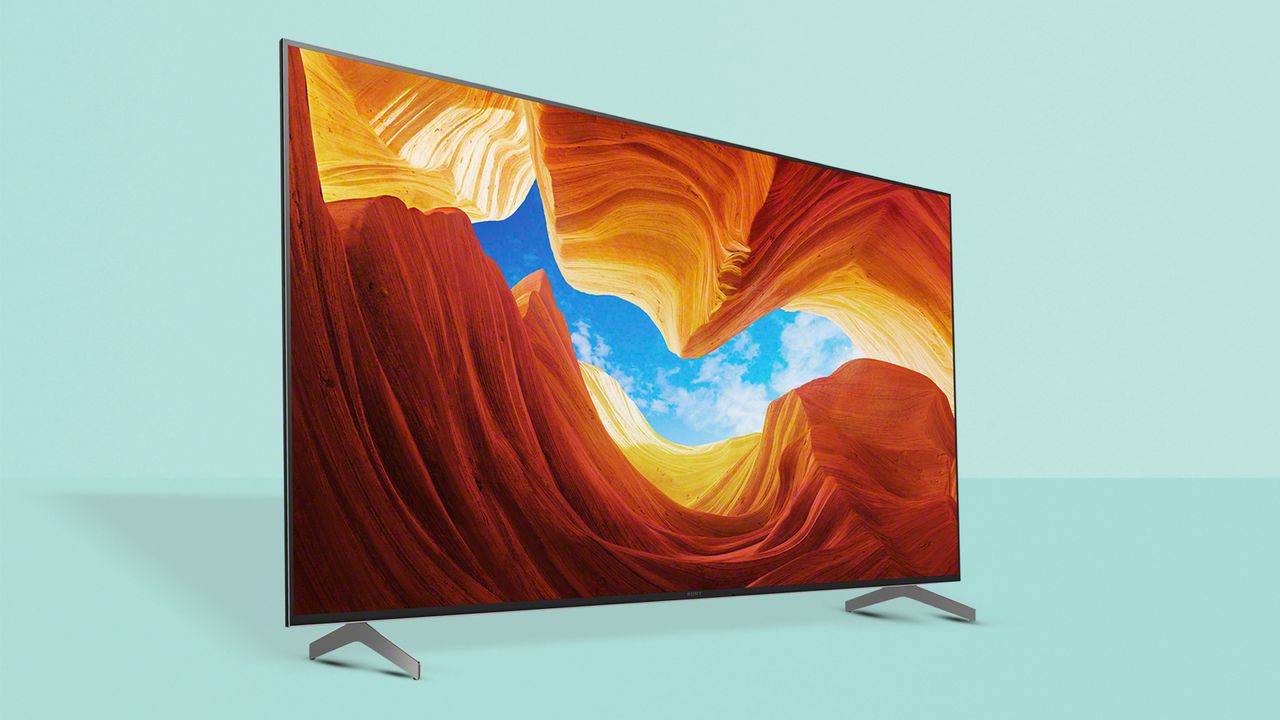
The Sony XH90 offers thrilling picture performance, great upscaling and the promise of incoming HDMI 2.1 for next-gen consoles – this is serious contender.
-
+
Detailed, dynamic 4K HDR pictures
-
+
Great upscaler of lower resolution content
-
+
Very agreeable sound by TV standards
-
-
HDMI 2.1 is ‘upcoming’
-
-
No HDR10+
-
-
In-your-face Android interface
Why you can trust T3

Welcome to T3’s Sony XH90/X900H review. In Europe, you'll find it as the XH90, while in the US it's the X900H.
This is Sony’s 2020 elite-but-less-expensive 4K LED TV range, which has since been replaced by the X90J in 2021 (here's our comparison feature) and thereafter the 2022 X90K. So if you're looking for even newer those are you options, but they'll likely cost you more cash.
The XH90 starts from a 55-inch version and goes right up to the eye-wateringly big 85-inch variant – but here we’re looking at the ‘still humongous' 75-inch model (the Sony KD-75XH9005), which absolutely deserves its spot as one of the best 75-inch TVs.
Despite being remarkable value for money, there's one pretty major flaw in the XH90: it lacks HDMI 2.1, which would bring tons of more advanced gaming features for consoles like the PlayStation 5 and Xbox One X. But Sony assures us an upgrade will be forthcoming sooner rather than later, which would bring it more into line with the best gaming TVs.
In the meantime, though, we are still more than happy to recommend it. We’re impressed, so let's dig into exactly why that is.

Sony XH90 review: price, release date & features
The model we’ve wrestled onto our test table is the Sony KD-75XH9005, released in summer 2020 for £2,199 – this is known as the Sony XBR-75X900H in the US, and is $2,199.
The range started with the 55-inch Sony KD-55XH9005 (£1,299)/XBR-55X900H ($999), then there's the 65-inch Sony KD-65XH9005 (£1,499)/XBR-75X900H ($1,399), and finally the 85-inch Sony KD-85XH9096 (£3,299)/Sony XBR-85X900H ($2,799). So unless your requirements tend only towards the best 43-inch TVs or best 48- to 50-inch TVs, there should be something here to suit you.
Whichever size proves most appropriate, though, at the very least you’ll be buying some of Sony’s predictably impressive build quality. The rear panel is of pretty ordinary plastic, it’s true – but who’s interested in that side of a TV screen? In every other respect, the KD-75XH9005 looks and feels the money’s-worth.
At slightly more than 7cm deep, the Sony’s not the slinkiest screen you ever saw, but then it features full-array local dimming rather than the more prosaic edge-lit variety. By backlighting its LCD pixels across the entirety of the screen rather than directing light just from around the edges, the Sony has by far the best chance of delivering proper backlight uniformity (as well as its chassis going back a little bit further than you might have expected).
As is usual with Sony, every HDR standard except HDR10+ is catered for here. There are four HDMI 2.0 inputs, all at HDCP2.3 and one featuring an Audio Return Channel.
You could be forgiven for thinking that every Sony 4K TV would be ready to go with HDMI 2.1 – after all, the company’s Playstation 5 is imminent, and all those next-gen features like 4K at 120fps, Variable Refresh Rate and Auto Low Latency Mode are part of the HDMI 2.1 standard. Sony says a firmware update will bring the XH90 range up to HDMI 2.1 (and give eARC functionality) before too much longer – let’s hope it’s this side of the PS5 actually going on sale.
Elsewhere, there are aerial posts for one terrestrial and two satellite TV tuners, an Ethernet socket, a couple of USB inputs and a composite video input. Wireless inputs extend to Wi-Fi (with Apple AirPlay 2 and Chromecast support) and Bluetooth 4.2. There are also physical outputs for headphones (via 3.5mm analogue socket) and digital optical.
Sony has joined in with 2020’s fashion for convoluted audio systems on its ‘almost flagship’ TVs. Here, its Acoustic Multi Audio system comprises a total of 20 watts of power, driving two full-range speakers and a couple of tweeters. These last two are high up at the rear of the chassis, one on either side, and the intention is to offer sonic movement that matches movement of images on the screen. Both LG and Samsung are trying something similar on their more expensive screens this year – soundbar manufacturers, it’s safe to say, are not quite quaking in their boots.
It almost goes without saying that there’s plenty of room for a soundbar between the Sony’s slender feet, and plenty of clearance below the bottom of the screen too.
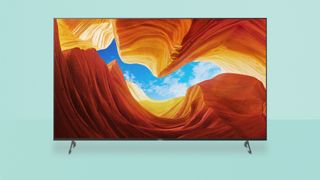
Sony XH90 review: picture quality
The XH90/X900H has a VA-type LCD screen, rather than the IPS-type of the 2019 model it replaces and, as long as you’re not sitting wildly off-axis, that’s a good thing. VA offers greater brightness and colour volume than IPS, but not the same viewing angles – and as the XH90 goes without the range-topping Sony XH95/X950H’s X-Wide viewing technology, you’ll want to be sitting as close to the dead-ahead as possible to see the XH90/X900H at its very best.
And its best is well worth seeing. With some 4K Dolby Vision-assisted content up and running, the Sony looks vivid and detailed – images are loaded with information and very crisply described, but there’s nothing forced or unnatural about the pictures the XH90/X900H delivers.
Edges are drawn smoothly, picture noise is suppressed almost entirely, and the all-important skin-tones and -textures are completely convincing. And once you’ve had a proper fiddle with the Sony’s Motionflow function in the set-up menus, the XH90/X900H delivers smooth-scrolling and believable motion.
The Sony offers up strong and well-defined contrasts, too. There’s a slight ‘either/or’ element to the way the XH90/X900H delivers black tones: you can either have them impressively deep and lustrous, or you can have them with plenty of detail. But there’s no arguing with the way the Sony serves them up alongside bright, clean and detailed white tones. The full array backlighting means screen uniformity is excellent, and there’s no clouding or haloing where black meets white – just straight-edged, confident definition.
When Dolby Vision material is detected by the XH90/X900H, it offers just three picture modes: Dolby Vision Bright, Dolby Vision Dark or Vivid. Unless you suffer from cataracts you’ll select one of the first two, depending on the ambient lighting of the room you’re in. And either way, you’ll enjoy a wide-ranging, vibrant colour palette. It’s intense, but not shouty or overdriven, and as a consequence, the XH90/X900H is an absorbing watch.
The Sony’s every meaningful action is governed by the company’s X1 4K HDR picture processing engine, and as well as offering this lovely native 4K picture quality it’s also charged with upscaling sub-4K material with a little more conviction than perhaps Sony’s 4K LEDs have managed in the past. And it’s equally successful in this respect.
1080p images have a deal more 4K-ness to them than might reasonably be expected. As far as detail, texture, colour and contrast are concerned, the XH90 is deeply impressive – the Sony can call on a burgeoning database of 4K-relevant images inform how it upscales to fit its mighty resolution, and as a result its Full HD-to-4K upscaling is satisfying in the extreme.
Picture noise is low, edges are drawn with a steady hand, and there’s decent depth of field on show too. Patterns of real complexity provoke some restlessness, but in virtually every circumstance the XH90/X900H is a composed and coherent watch.
Slow-panning motion can cause the Sony to betray just how much work the X1 engine is getting through, it’s true, but nevertheless the XH90 compares favourably to any similarly priced 4K LED TV around where upscaling is concerned. For the 75-inch behemoth we tested especially, it’s remarkably adept.
For gamers, the XH90/X900H falls into the ‘good’ rather than ‘great’ category. The current lack of HDMI 2.1 specification is going to put off those who’ve pre-order their next-gen console, but a lag time of comfortably less than 20ms isn’t to be sniffed at.
And, let’s not forget, the promised HDMI 2.1 update (and the 4K at 120Hz ability that goes along with it) could bring that figure down appreciably.
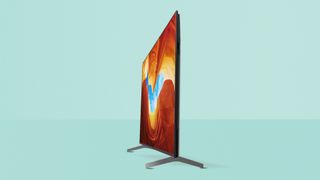
Sony XH90 review: sound quality
By the prevailing standards of LED TVs, the XH90/X900H sounds gratifyingly burly and expansive. No, it’s no competition for the best soundbars and no, the sound doesn’t follow the on-screen action in any meaningful way - but nevertheless the Sony has some sonic substance.
The XH90/X900H can handle a Dolby Atmos soundtrack – not in the sense of delivery surround-sound/overhead from its speakers, you understand, but simply able to downscale and deliver it. And in this respect it does well: there’s frankly unlikely muscle and drive to the Atmos-derived audio it serves up. The Sony’s ability to go respectably loud without simultaneously becoming brash or edgy is not to be underestimated, either.
Ultimately, though, you should be prepared to budget to bring the audio quality into line with the video quality when you're spending on a more premium TV. At least the XH90/X900H sounds good enough for you to take your time pondering your choice of audio system, rather than driving you online to buy the first half-presentable soundbar you encounter.
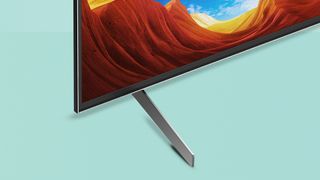
Sony XH90 review: design & usability
The industrial design of the KD-75XH9005 is, really, about all you could ask for. That’s to say it’s a huge amount of screen, surrounded by minimal bezels of impressive build quality and finish. The feet are slender (if the 33kg weight of this particular model puts you off wall-hanging), and even though the chassis is relatively deep it’s all put together with proper integrity.
As far as control goes, you’ve a choice. The Sony ships with an absolutely bog-standard remote control handset – it doesn’t feel all that luxurious, and some of its buttons are smaller than they should be (except for the ‘Google Play’ and ‘Netflix’ buttons, naturally, which are bigger than they need to be). It does the job, though, even if it lacks the premium feel of the TV itself.
At least it has a nice prominent ‘mic’ button, though, and the XH90/X900H proves as flexible and responsive a Google Assistant TV as we’ve encountered. Keep your instructions brief, both in length of words and length of sentences, and all should be well.
Your voice, or the remote control, is used to navigate an Android 9.0 interface, and as is usual with Android, it’s gratifying and infuriating in equal measure. On the plus side, there are plenty of options as regards streaming services (all the big ones bar Apple TV+, including Disney+, Amazon Prime, Rakuten and so on) and UK catch-up TV apps (thanks to the inclusion of YouView). On the downside, it continues to insist on occupying the entire screen when you summon the interface, so you can’t navigate and watch TV at the same time.
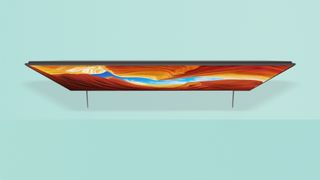
Sony XH90 review: verdict
In the simplest terms, this is a very good TV indeed. It has some areas of true picture-making prowess, it sounds better than the bulk of TVs at any price, and it’s a most effective upscaler of sub-4K material. If you can live without HDR10+ compatibility and the Apple TV+ app, it’s as good a 75-inch TV as this sort of money will currently buy, beating its closest competition on price by a large margin.
Also consider
The most direct rival the Sony XH90/X900H is the Samsung Q80T, and much like the Sony this is one step down from Samsung's 4K flagship, the Samsung Q90T. It's a QLED set, with the lush colours and bright HDR performance that characterises Samsung's use of that technology. It's a really strong TV – see our full Samsung Q80T review for more details.
Sign up to the T3 newsletter for smarter living straight to your inbox
Get all the latest news, reviews, deals and buying guides on gorgeous tech, home and active products from the T3 experts
Simon Lucas is a freelance technology journalist and consultant, with particular emphasis on the audio/video aspects of home entertainment. Before embracing the carefree life of the freelancer, he was editor of What Hi-Fi? magazine and website – since then, he's written for titles such as Wired, Metro, the Guardian and Stuff, among many others. Should he find himself with a spare moment, Simon likes nothing more than publishing and then quickly deleting tweets about the state of the nation (in general), the state of Aston Villa (in particular) and the state of his partner's cat.
-
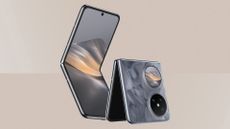 The Huawei Pocket 3 is tipped to be a foldable with a difference
The Huawei Pocket 3 is tipped to be a foldable with a differenceAnd it could mean a big change for future flip phones
By Britta O'Boyle Published
-
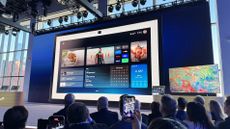 Amazon Alexa+ official – the all-new, smarter version of Alexa you'll be using soon
Amazon Alexa+ official – the all-new, smarter version of Alexa you'll be using soonAlexa+ is AI-powered and coming to an Amazon device near you soon
By Rik Henderson Published
-
 You can soon turn your Moto Razr into a flip phone Blackberry
You can soon turn your Moto Razr into a flip phone BlackberryI've never been more in love with a phone
By Sam Cross Published